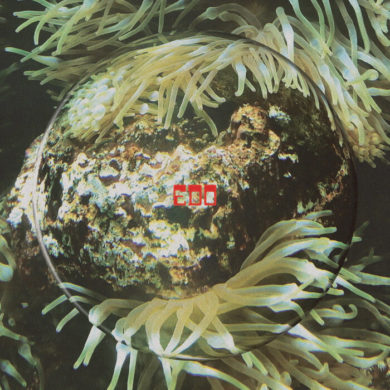012 – Systema Naturae I
(012, 2022-02-18)
Systema Naturæ‘s story started in fact a long time ago, before the birth of 012’s owner Claudio PRC, before the electronic age, before the industrial revolution even, at a time when the human being was more connected to nature, not for some eco-friendly choices, but as a matter of survival. If the atmospheric techno enthusiast often has a particularly intimate – almost religious – relationship to nature, there were scientists back in the days, who were studying it much closer than through music.
A brief review of the past might better explain what Claudio PRC had in mind when he conceptualised the VA. It is worth firstly remembering Greek philosopher Aristotle who, through his studies in biology and zoology, identified three realms to order the living creatures, depicted in three “floors”. The first one was representing the plants, limited to growing and reproducing. The second one is the animals, endowed with senses. The last one: the human beings, capable to think. The verticality of such a system lasted for more than fifteen centuries, with the addition of God on top of it during the upsurge of Christianity.
The hierarchy was still in taxonomist Carl von Linné’s mind when he proposed his more detailed classification during modern times. Based on his numerous observations, the Swedish biologist set the living creatures as “species”, themselves parts of “genres”, which are parts of “families”, then finally of “reigns”. He described such a “system of Russian dolls” in his publication Systema Naturæ, in 1735.
The writing originally had eleven pages and along with Linné’s studies on the field, became a 3000 pages encyclopaedia divided into three volumes, describing more than 10’000 living organisms: the researcher was what you can call “a senior passionate”.
A few years later, Lamarck suggested that the environment had an impact on the morphology of the various species, which Darwin explained further in his notorious “theory of the evolution” in 1859, achieving to break down the verticality of the concept: the human being is finally just one specie among the others, alas for the ego.
It is quite smart to associate an atmospheric techno release with such studies. Firstly, it gives storytelling to the artists, who often lack it, while Donato Dozzy mentioned in one of our interviews how central having storytelling is, to building a track or a mix. Secondly, it creates interesting parallels: an encyclopaedia divided into three volumes, a series of VAs divided into three parts, a passionate scientist of nature, four passionate “scientists of the sound”, a meticulous taxonomist, four meticulous DJs and track selectors, and so on, it’s infinite.
Thirdly, it provokes a certain nostalgia for times that none of us has lived but that can be felt for being excluded from “the slavery of the new technologies”. Without necessarily realising it, we enjoy the deep atmospheric techno for its potential to free the mind from the aggressive modern reality, at least during the few minutes of listening. Without necessarily realising it, we enjoy finding through the sonic atmospheres a certain intimate connection with nature, lost by our daily obligations and routines.
The most interesting parallel, for us, can be found in the verticality of Carl von Linné’s classification: who is on top in Claudio PRC’s vision? God? The artist? Nature itself? The listener? Maybe a humble combination of the four? It is worth remembering that Claudio PRC founded The Gods Planet in 2010 with Ness, not for both to be seen as “music divinities”, but inviting the producers of the label to be “the free creators” (“the Gods”) of their music (their “planet”/world). The idea was to offer them a strong hymn of independence in the creative process, as a way to highlight “the artistic authenticity”. The listener becomes a privileged witness of it, instead of a reviewer, and by that is more immersed in the music, and more connected to the depicted nature.
Claudio PRC took his own path with 012, but somehow cultivates the spirit at the heart of his music and convictions. Out of them, the young label can only rise with fabulous releases in its catalogue, “Systema Naturae I” being the fourth one.
While diving deeper into it, we notice that the topic of nature, as seen from its scientific perspective, has been nicely interpreted by talented artists, well-chosen for being also particularly meticulous by nature.
The opening track goes to Rambadu, who sets the main mood. Sonic reminiscent of birdsong and rustling of trees under the accompaniment of a humming, unhurried layered drone, set a subtle tribal vibe, fading out the distractions of the outside world and provoking the deep immersion. Forest On Stasys enhances the effect by smoothly flowing into shamanistic motives, distributed widely into space and achieving to dissolve the mind into evasive soundscapes.
The B-side occurs with other great names. “Lupus” by Dycide reminds the exhilaration of living in a state of pure consciousness: his subtle panoramic manipulations create the timeless loops we wish would never end. Claudio PRC humbly concludes the compilation: “Asbestus”, marked as a “gold standard” of deep techno, is bringing us back to Rambadu’s tribal mood, closing the circle.
The four well-inspired artists demonstrate their own “Systema Naturae”, by building an interesting musical architecture and by creating a holistic feel with a common vision. The listener, on the other side, is artistically invited to be like Carl von Linné: passionate, and maybe closer to the real nature…
The music and the concept are where the greatest strengths of the compilation come into play, showing that Claudio PRC knows how to be surrounded by the right people and how to run his very promising label.
WRITING BY: VADIM UKHANOV AND CEDRIC FINKBEINER | 21 FEBRUARY 2022


